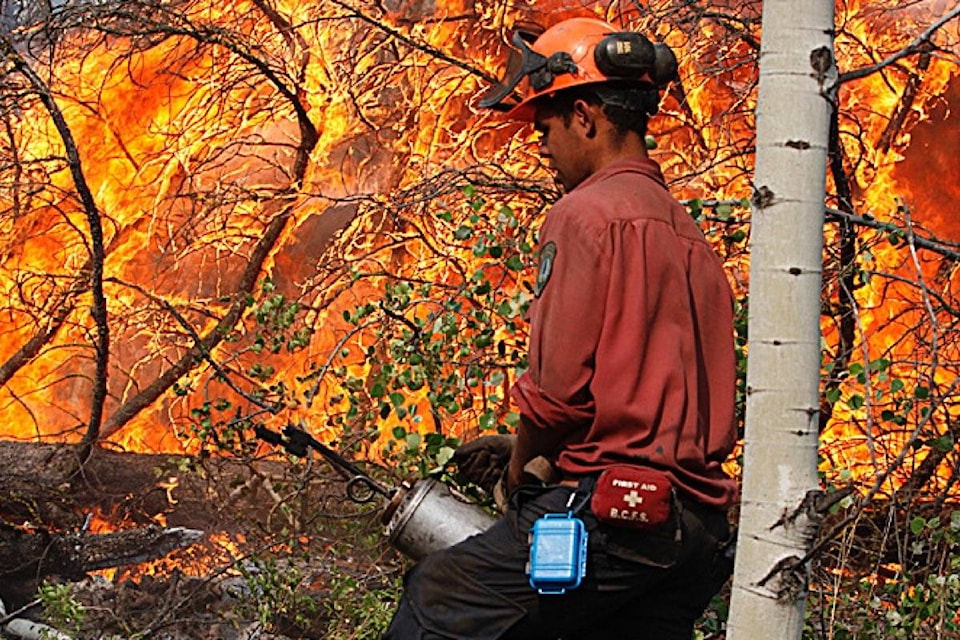Coming off the coldest winter in recorded history for much of B.C. and a cold, wet spring, I’ve been waiting for someone to blame the latest round of forest fires on conditions created by human-caused global warming.
B.C. Greens leader Andrew Weaver didn’t disappoint. Shortly after 100 Mile House was evacuated, he seized on a comment from an unnamed B.C. Red Cross official who opined that disasters are happening more frequently in B.C.
“Sadly, as the effects of climate change take hold, events like the wildfires displacing so many British Columbians are becoming increasingly common,” Weaver announced from his leafy Oak Bay constituency.
It’s understandable that the Red Cross is feeling stretched. After relentless cold this past winter, B.C. has barely finished coping with floods due to unusually high snowpack that continued to grow through May and still hasn’t melted entirely.
And now fires, presented once again as a new, unprecedented threat. I’ve been chronicling provincial fire seasons for many years, and I’m no longer surprised by this sort of brazen political falsehood.
No worries, politicians say, we’ll just ramp up that carbon tax and start diverting the revenue to subsidize pet projects like electric cars, and those forest fires will subside.
The first thing to remember about this year’s fires is that they are clearly not a result of increasingly hot and dry conditions. It was only a few weeks ago that the usual jokes about “June-uary” were circulating as rain carried on into summer throughout the province.
Has there been an extraordinary stretch of hot weather in the first couple of weeks of July? No. Are conditions in the Southern Interior drier than usual? No. Is it unusual for these areas to dry quickly in summer? No. Take a walk through the sagebrush some time. Watch for rattlesnakes.
Here’s some context you won’t hear from grandstanding politicians and drama-seeking Vancouver media as communities in the fire-based forest ecosystems of the B.C. Interior face their biggest threat since 2003.
This season’s crisis began when a dry lightning storm passing through the arid B.C. Interior on July 6, resulting in 56 reports of new fire starts. By the weekend, there were 140 starts reported in a day and a provincial state of emergency had been declared, due to the proximity of communities.
There were similar dry lightning events in 2015 and previous years, but fortunately they did not strike along the populated Highway 97 corridor, and got little attention. To cite one of many examples, Williams Lake was almost evacuated in 2010, when the Meldrum Creek fire complex approached 500 square kilometres and looked ready to jump the Fraser River from the west. Smoke was drifting into Manitoba.
By last week, the total since April 1 passed 600 new fire starts, compared to just under 500 at the same time in 2016. But the area burned last year was almost twice as big, due to April grass fires that spread into boreal forest in the Peace region and into Alberta where the Fort McMurray fire was closing in.
An average B.C. forest fire season is around 2,000 reported fires.
Foresters don’t generally cite climate change, however one defines that slippery term, unless prompted by reporters. They talk about decades of fire suppression that artificially built up fuel loads across vast areas, and the huge costs to mitigate that situation. They talk about bark beetle infestations that add to the fuel load from decadent forests that must burn and always have burned to regenerate themselves.
Tom Fletcher is B.C. legislature reporter and columnist for Black Press. Email: tfletcher@blackpress.ca Twitter: @tomfletcherbc


